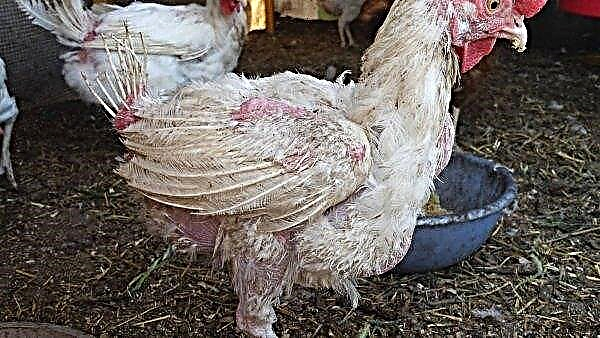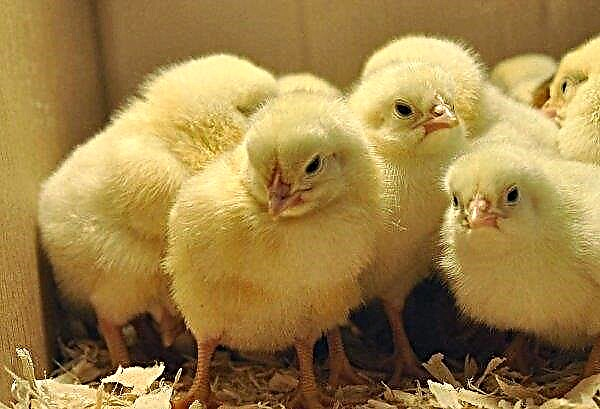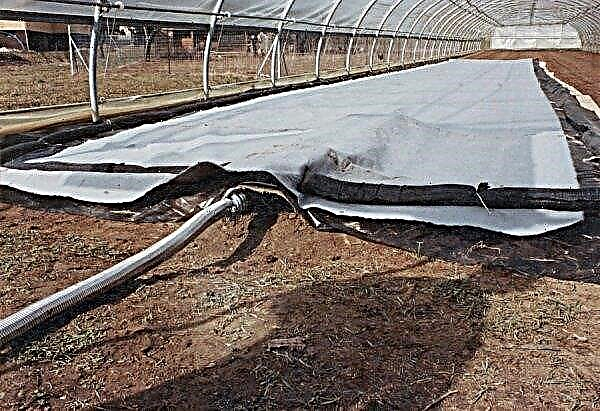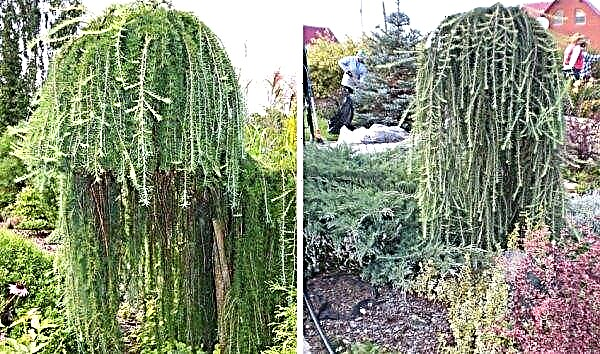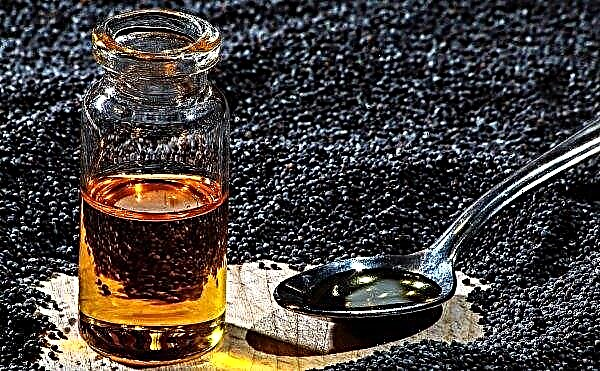In the minds of most people, aloe is associated with a dull spine sticking out of a pot and traditionally used to disinfect wounds and other medical purposes. Meanwhile, there are very unusual species of this plant that can become a real decoration of the home interior. One of them is motley aloe, also known as brindle. We will tell you more about it.
Botanical description of the plant
The Latin name for motley aloe is Gonialoe variegata, but in everyday life this flower is sometimes called "partridge" or "falcon feather" for the colorful color of the leaves. South Africa is the historical homeland of the plant, primarily the territory of modern Namibia and South Africa.
Aloe refers to succulents, that is, it has the ability to accumulate water in its tissues, thus experiencing prolonged droughts. The falcon feather is a compact bush with neat, spiraling dense leaves. As a houseplant, this type of aloe is used not only because of its medicinal properties and decorative variegation of leaves, but also because of the rather spectacular flowering. Unfortunately, it arrives quite late: the plant does not bloom for the first 4, and sometimes 6 years, but most other aloe species do not throw flowers at all when grown as a houseplant. The flower stalk grows from the middle of the outlet, forming at the end a single inflorescence in the form of a tube.
Photo gallery
The botanical description of tiger aloe is given in the table:
| Maximum sizes | 25–35 cm long, 4–5 cm wide |
| Root system | Powerful, fibrous type, roots long and straight, shaped like cylinders |
| Stem | Missing |
| Leaf shape | Triangular, with denticles along the edges. Leaves are straight, up to 15 cm long, come out of one outlet with a beautiful regular spiral in 3 rows |
| Leaf color | Variegated, alternating symmetrical white stripes and spots on a dark green background, the border of the sheet is also white. Sometimes the main color of the sheet has a burgundy tint |
| Leaf structure | Thick, fleshy |
| Inflorescence | Single, peduncle long, up to 25-30 cm, erect, pink bract with green stripes |
| Flower shape | Tubular bell-shaped |
| Flower sizes | Small |
| Flower color | Red, pink, orange, yellow |
| Fruit shape | Box |
| Fruit color | Green |
Healing properties
Like other types of aloe, this species has numerous medicinal properties, among which it is important to name:
- bactericidal;
- diuretics;
- healing;
- general strengthening (included in the composition of the preparations for the symptomatic treatment of rhinitis and respiratory infections);
- anti-inflammatory (especially often used for various eye inflammations);
- cosmetic (improves the quality of the skin, helps get rid of acne);
- antidiarrheal (helps with intestinal disorders).
 Such a multifaceted healing effect that a plant has on various organs and systems is due to its unique chemical composition, rich not only in vitamins (primarily ascorbic acid and carotene) and minerals (zinc, iron, potassium and others), but also containing amino acids (like interchangeable as well as irreplaceable), saponins, enzymes, flavonoids and essential oils.
Such a multifaceted healing effect that a plant has on various organs and systems is due to its unique chemical composition, rich not only in vitamins (primarily ascorbic acid and carotene) and minerals (zinc, iron, potassium and others), but also containing amino acids (like interchangeable as well as irreplaceable), saponins, enzymes, flavonoids and essential oils.Did you know? The human body needs 22 amino acids to function properly. Twenty of them are in aloe juice. Moreover, out of 8 amino acids that we cannot synthesize on our own, 7 are present in this unique plant.
Growing conditions
In nature, tiger aloe grows on stony soils under conditions of a constant lack of moisture. This feature of the flower must be taken into account when growing it as a houseplant.
Accommodation
Perhaps the most important thing that this type of aloe needs is good lighting. Even in extreme heat, such a flower does not need shading, and this compares favorably with most other indoor plants.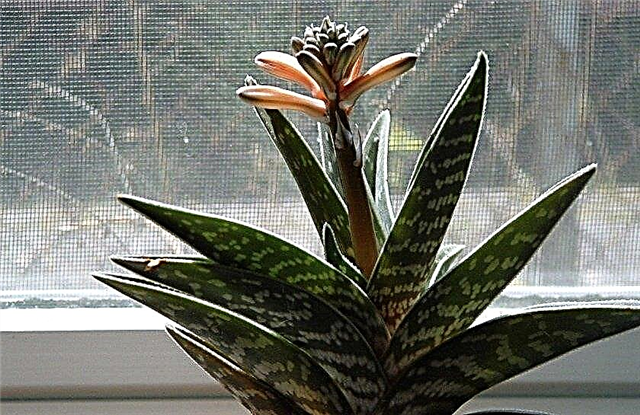 Of course, a constant stay in the scorching sun can lead to the fact that tiger leaves begin to lose their decorativeness, but, on the whole, windows facing the south are still the best choice for a succulent.
Of course, a constant stay in the scorching sun can lead to the fact that tiger leaves begin to lose their decorativeness, but, on the whole, windows facing the south are still the best choice for a succulent.
In the summer, a flower pot is very useful to take out to a well-lit balcony or even transport it to the cottage, highlighting for it a sunny place among other flowers.Important! Drops of water should not be allowed to fall on aloe leaves at a time when they are illuminated by the sun. The effect of the lens, which occurs in this case, will inevitably lead to a burn of the sheet.
Temperature mode
The optimum temperature regime for the plant is considered to be a range between +12 and +18 ° C. However, in the summer, the African flower tolerates warming up to +26 ° C, while in winter it is permissible to lower the temperature to +10 ° C. I must say that since in winter the amount of light that can be provided on the windowsill naturally decreases, a decrease in air temperature for the flower is even desirable (otherwise aloe need to provide additional artificial lighting for at least three hours a day). 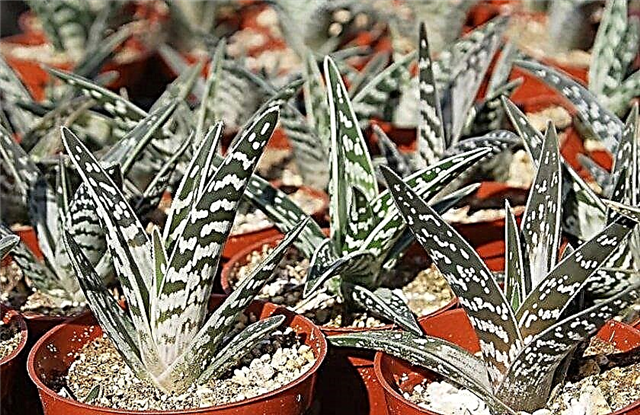 Thus, the succulent is introduced into the phase of forced rest and, accordingly, it is easier to tolerate a lack of light. In February, with an increase in daylight hours, the pot can again be placed in a warmer place.
Thus, the succulent is introduced into the phase of forced rest and, accordingly, it is easier to tolerate a lack of light. In February, with an increase in daylight hours, the pot can again be placed in a warmer place.
Air humidity
Variegated aloe does not make high demands on the humidity regime, but dry air (relative humidity not more than 40%) is still more familiar and preferable for a flower, therefore, a falcon feather reacts poorly to showering and watering on leaves, such measures should not be abused.
It is better to remove dust from beautiful mottled leaves with a slightly moistened cloth. This procedure is enough to perform a couple of times a month.Did you know? Aloe can do without water for 7 years and still not stop growing. True, this is only possible in the wild.
Home Care
Aloe is one of the most unpretentious plants. Experienced flower growers sometimes joke that it takes a lot of effort to ensure that such a flower dies. That is why even those who have never been breeding a home greenhouse and who have neither the time nor the desire to devote much effort to this can easily grow a small motley partridge on their windowsill.  But in order for tiger aloe to feel as comfortable as possible and at least occasionally please the owner with its flowering, certain requirements still need to be fulfilled.
But in order for tiger aloe to feel as comfortable as possible and at least occasionally please the owner with its flowering, certain requirements still need to be fulfilled.
Watering
Succulents rarely need to be watered, because in moist soil they get sick and can even die. The procedure is carried out only at that moment when the soil in the pot becomes completely dry. In summer, this can happen once a week or even two weeks. In winter, when the active phase of aloe vera life stops, moisture is applied once every 20-30 days, and its amount should also be reduced until the soil is slightly moistened.
He really doesn’t like aloe to get water in the middle of the outlet, so when watering you need to try to moisten the earth along the edges of the pot, alternating this procedure with the lower watering (in the container in which the flowerpot is installed).
Water for irrigation must be warmed up a little, and if it is taken from a normal water supply system and contains chlorine, it is good to defend it first.Important! Lower watering helps to wash out nutrients from the main part of the soil, where the roots of the indoor flower are located, so this method should not be abused.

Top dressing
Tiger aloe should be fed only by the root method, by adding fertilizer to the water for irrigation. Nutrient mixtures applied to the leaves are harmful to the plant. So that the mineral substances contained in the fertilizer are better absorbed and do not burn the root system, it is recommended that you first water the soil with a small amount of ordinary water and only then use a nutrient solution.
When choosing a specific mineral fertilizer, it is best to focus on funds intended for succulents.
Important! During the use of aloe leaves for medicinal purposes, fertilizers are not applied under the plant.
In the active phase of the life of aloe, fertilizers are recommended to be applied 1-2 times a month, during the dormant period (from October to February), top dressing is stopped. There are several more important rules regarding the timing and frequency of fertilizing under the aloe bush:
- after planting or transplanting, the plant should not be irritated with additional additives for 6 months;
- the first dressing after acquiring a flower in a store is carried out no earlier than a month later;
- fertilizer application ceases during the period when the plant is sick or has been attacked by pests (the procedure can be resumed only after the bush is fully restored and begins to let out new leaves).
Video: Feeding indoor plants
Pruning
Features of the botanical structure of aloe do not imply a procedure such as pruning. The leaves of this plant themselves form a symmetrical bush, and additional intervention is completely unnecessary here. In order for the flower to always look spectacular and neat, you just need to carefully remove the lower leaves after they turn yellow and dry, as well as cut the peduncle after flowering.
Transfer
Tiger aloe develops better in a spacious pot, this flower does not tolerate crowding. As long as its active growth continues (a young plant can increase its height to 10 cm per year), it is necessary to transplant it into a new, larger flowerpot annually. Adult flowers do not need such a frequent change of pot, but at least once every 3 years a transplant is still recommended.
Traditionally, the best time for transplanting is spring or the end of winter, when the plant leaves the phase of forced dormancy and begins active growth. The right choice of pot is the key to the correct development of the flower in the future. You should not increase the volume of the pot too much, in this case, the period of fixing the plant in a new place will be much slower. It is ideal to take a pot that is 2-3 cm larger in depth and diameter than before.
The right choice of pot is the key to the correct development of the flower in the future. You should not increase the volume of the pot too much, in this case, the period of fixing the plant in a new place will be much slower. It is ideal to take a pot that is 2-3 cm larger in depth and diameter than before.
There are several opinions regarding the preferred shape of the pot: some growers claim that aloe prefers high capacities, while others advise choosing wide ones. The most correct point of view can be considered, according to which the shape of the pot should correspond to the formed root system of the flower. It is best to stock up on several options for flowerpots and, having pulled the flower out of the old container, orient yourself in which pot it will be more comfortable for it.Important! Aloe flowerpot must have large openings for water drainage, this rule is the same for all succulents.
Clay pots are more suitable for succulents. Such a pot is more expensive, but in it moisture evaporation occurs faster and, accordingly, the risk of stagnation of water in the roots decreases. In addition, clay eliminates overheating of the root system. If aloe grows in such a container, it can be dug into the ground in the summer at the summer cottage with a flowerpot, without injuring the flower with an additional transplant. The next important point related to transplantation is the choice of substrate. Falcon feather prefers soil with a neutral or slightly acidic reaction (pH level in the range of 5.0–7.0), however, much more stringent requirements are imposed on the permeability of the earth; succulent grows poorly on heavy soils. In addition to a thick drainage layer, it is useful to add small pebbles and coarse sand to the soil mixture itself.
The next important point related to transplantation is the choice of substrate. Falcon feather prefers soil with a neutral or slightly acidic reaction (pH level in the range of 5.0–7.0), however, much more stringent requirements are imposed on the permeability of the earth; succulent grows poorly on heavy soils. In addition to a thick drainage layer, it is useful to add small pebbles and coarse sand to the soil mixture itself.
The transplant process is a sequence of actions:Important! A feature of growing aloe in room conditions is to add a layer of pebbles or sand on top of the substrate. It should give the impression that the flower grows in stones.
- About 2 weeks before the planned procedure, the flower should stop watering.
- When the earthen lump finally dries, it must be carefully pulled out of the pot along with the plant. If this does not work, first with the help of a knife, the back of a tablespoon or wooden stick, you should separate the edges of the earth from the walls of the pot.
- A new pot is filled with drainage material, after which a small layer of the prepared substrate is laid out on top.
- Two options are now possible. An earthen lump together with the plant can be installed in a new pot as a whole, after which you can add fresh soil mixture on the sides and top (transshipment). This method is good in that the root system of the flower is not damaged. The transplant as such involves the careful removal of earth from the roots of the plant. In this case, you can see all the problems that have not yet begun to manifest themselves, but are already taking place. But the flower tolerates a similar procedure much harder. If the root is accidentally damaged, before placing it in a new pot, it must be sprinkled with wood ash for disinfection.
- After filling the earth into a new pot (both during transplanting and during transshipment), the soil is well compacted so that the soil layer, taking into account the stones, sand or expanded clay laid on it, does not reach the top edge of the pot by about 1 cm.
- The newly transplanted plant should be placed for 5 days in a shaded place and not watered for the first day.
Did you know? Science knows about three and a half hundred species of aloe, and some of these plants reach a height of 15 m. Today, only a few varieties of succulents are used as indoor flowers, but even the vast majority do not bloom at home.
Breeding
Usually, not very experienced flower growers try to plant aloe by cutting off a leaf from a flower and placing it in a glass with water to form roots. In fact, this method of plant propagation is incorrect. A new plant can be obtained in two ways - by rooting cuttings and seeds, but in the first case, the procedure is carried out using a completely different technology.
Cuttings
Aloe propagation by a vegetative method is best done in the fall.
It is done like this:
- Root or lateral shoots are very carefully separated from the adult outlet with a sharp knife.
- The cut line is sprinkled with charcoal for disinfection.
- Separated cuttings are laid out on a clean cloth and left to dry for two days.
- While the shoots are dried, small pots are filled with a fertile and light soil mixture.
- The substrate is abundantly watered with a weak solution of potassium permanganate (it is necessary that by the time of disembarkation, excess water and chemicals from the soil evaporate, and the plant does not receive a chemical burn).
- After the set time, a depression is made in the middle of the soil mixture, where a moistened mixture of peat and coarse river sand is filled (you can use pure sand).
- The stem is buried 1 cm into the sand-peat pad, the soil around it is carefully rammed.
- If you wish, you can drive a peg next to the handle and gently tie a shoot to it.
- A pot with a handle is placed for germination in a warm and slightly shaded place (the sun should be enough, but its rays too hot should not burn the leaf). The optimum temperature for rooting is +25 ° C.
- The first week the escape is not watered.It is not necessary to cover it with a film or glass to create a greenhouse effect, instead, you just need to spray the aerial part of the stem several times a day with warm, settled water from a spray bottle (however, some flower growers recommend refraining from this procedure).
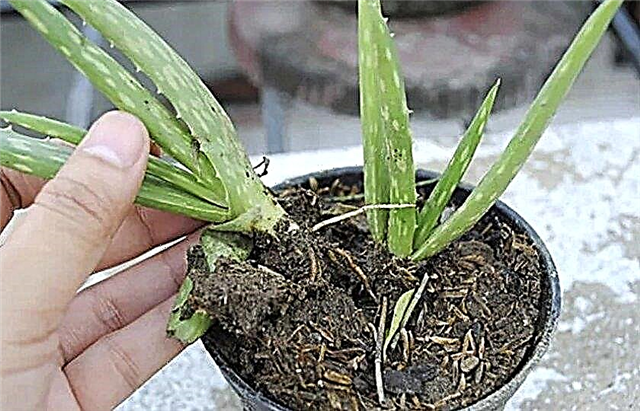
Seed cultivation
Growing aloe from seed is harder and longer than rooting the shoot, however, in general, there is nothing complicated in this technology.
Flower seeds can be collected independently or purchased at a flower shop. The first option is considered quite problematic, since tiger aloe blooms still not very willingly and not at all. If this opportunity presents itself, the dried-up fruit box should be carefully opened and the contents removed, kept for several days in the open air so that the seeds do not begin to rot or mold, and stored in a paper envelope or linen bag until next year. Planting variegated aloe seeds is best done in early spring or late winter.
The sequence of actions to be followed is as follows:
- To disinfect seeds in a weak solution of potassium permanganate or in “own juice”: a small amount of aloe juice, which is an excellent bactericidal agent, must be added to a glass of water.
- Wash prepared containers (drawers, cassettes for seedlings or plastic cups if there is no other container) with soap and water. Pottery, in which other domestic flowers used to grow, is recommended to be additionally baked for 20-30 minutes in a well-heated oven. It is also important to get rid of any plaque on the walls of the container.
- If necessary, make drainage holes in containers.
- Sift the succulent substrate or sand mixed soil mixture through a large sieve.
- Fill the containers with soil so that about 2 cm remains to the edge of the surface.
- Put the seeds on the surface of the substrate and push a little deeper into the surface. If individual packaging is used, one seed is laid out in each cup. When planting in a box between the seeds, leave at least 2 cm of free space on each side.
- A thin (no more than 1 cm) layer of pre-sifted river sand is poured over the seeds. Humidify it is not necessary.
- Put the container (or containers) in the pan and fill it with standing water. The depth of the pan must be chosen so that the water reaches one third of the height of the pot.
- Cover the structure on top with film or glass and leave to germinate in a bright place at a temperature of + 25 ... + 30 ° C.
- At least once a day, the film must be removed for ventilation, and the surface of the sand should be carefully sprayed from the spray gun, preventing its overmoistening.
- Shoots should appear about the fourth day after planting. At this moment, the film can be removed and the air temperature reduced to + 22 ... + 25 ° C.
- When the seedlings form the first pair of real leaves, they can be carefully, trying not to damage the young roots, transplanted to a permanent place (in an individual pot).

Growing difficulties
Motley aloe rarely gets sick. If you do not allow waterlogging of the earth in the pot and provide the plant with good lighting, there should not be any problems with the flower. However, exceptions to the general rule, of course, do occur.
Disease
Dry and root rot, which sometimes affects the tree-like aloe, which is well-known to everyone, is practically not characteristic of its motley “relative”.
The following are possible signs that indicate that the flower does not feel very comfortable, as well as the reasons that cause them, and methods for solving the problem:
- Twisting the leaves. It is possible that dust covering the leaf plate makes the plant difficult to breathe. Wipe the leaves with a dry or slightly moistened soft cloth once a week.
- Leaves turn yellow and soft. Such a symptom usually indicates an excess of moisture in the soil or improper watering. Reduce watering. Settle and heat water before watering the flower.
- Drying the tips of the leaves. Usually occurs when the root system of a plant grows and begins to experience crowding in the same pot. Transplant the flower into a larger container.
- Growth cessation. May occur due to lack of lighting, excess moisture, lack of nutrients, improperly selected soil or a tight pot. Analyze possible causes and adjust care.

Pests
Most often, pests fall on aloe from neighboring plants, less resistant to parasite attacks.
So, tiger aloe can be affected:Did you know? You can defeat the spider mite on a houseplant by treating the flower with any anti-flea drug for cats or dogs, which can be easily purchased at any pet store.
- Scaffolds. The presence of these small insects on the flower is easy to notice by the characteristic brown plaques that appear on the leaves (this is a pest covered with a kind of shield, hence its name). In the early stages of the lesion, the plaques, together with the parasites located under them, need to be carefully scraped off, after which it is good to rinse the leaves with a saturated soapy solution, into which it is also useful to squeeze a few cloves of garlic. Care must be taken so that the soap does not get into the soil.
- False shields. Externally, insects are very similar to scale insects. The affected leaf becomes sticky and soft (the pest sucks the juice out of it), becomes covered with yellow or brown spots and eventually dies. It is possible to deal with false shields using the same soap-garlic solution, so there is no need for accurate identification of the parasite.
- Mealybug. These motile small insects, covered with white villi, are visible to the naked eye. They need to be removed from the flower, and then treat the plant with alcohol, pepper infusion, soap-garlic or soap-onion gruel. To fix the effect of aloe, you need to remove it in a dark place for 4 days.
- Nematodes. These small worms often infect plant roots, especially if the soil in the pot is too wet. They need to be fought with a transplant, accompanied by the removal of damaged roots.
- Spider mite. The parasite is not visible visually, but it is easy to "calculate" by spider-like threads that it stretches between the leaves of the plant. The infected plant should be placed in a well-ventilated area. Leaves can be treated with soapy water or alcohol.
- Thrips. The characteristic signs of the life of this pest are silver streaks on the leaves. At the first stages of the lesion, the above-mentioned folk remedies can help solve the problem, while it is important to understand that the soil is favorable for thrips. Thus, as in other cases, adjusting the external environment is the best way to deal with the pest.
Video: Diseases and Pests of Succulents
If the defeat of the flower by pests is rampant, it is necessary to resort to the use of insecticides. To combat all the insects mentioned above (a spider mite is not an insect), you can use the following drugs:
- "Aktara";
- "Vidat";
- "Decis";
- Inta-Vir;
- "Karbofos";
- Tekta;
- "Fosbetsid";
- "Actellicus";
- Fitoverm;
- "Fufanon."
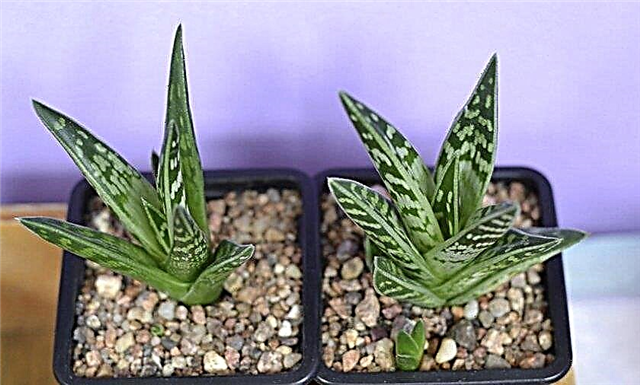 In addition to them, effective acaricides (anti-tick drugs) that can be used to treat variegated aloe include:
In addition to them, effective acaricides (anti-tick drugs) that can be used to treat variegated aloe include:- “Akarin”;
- "Actofit";
- Apollo
- Vermitek and many others.

